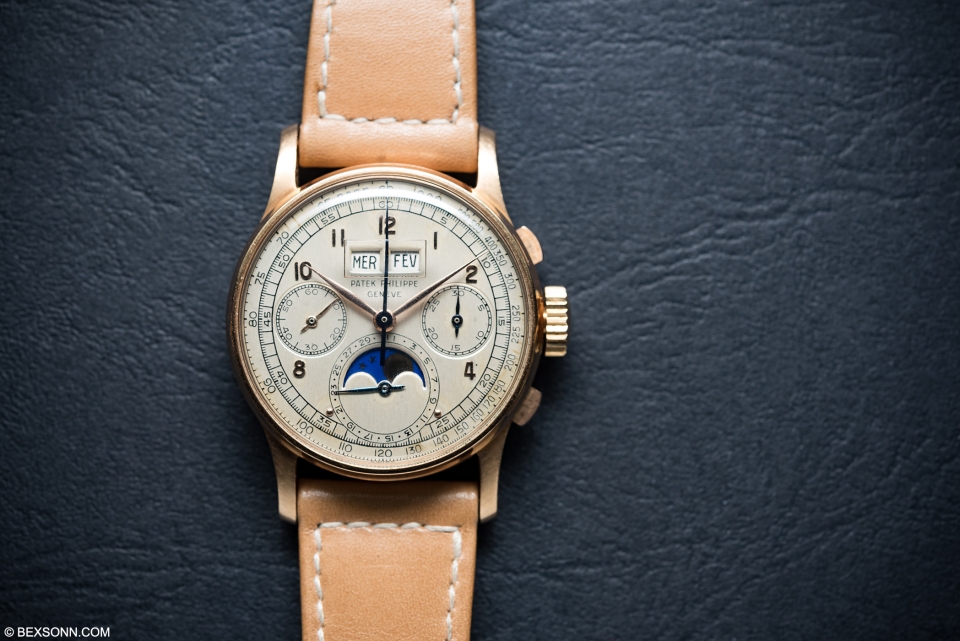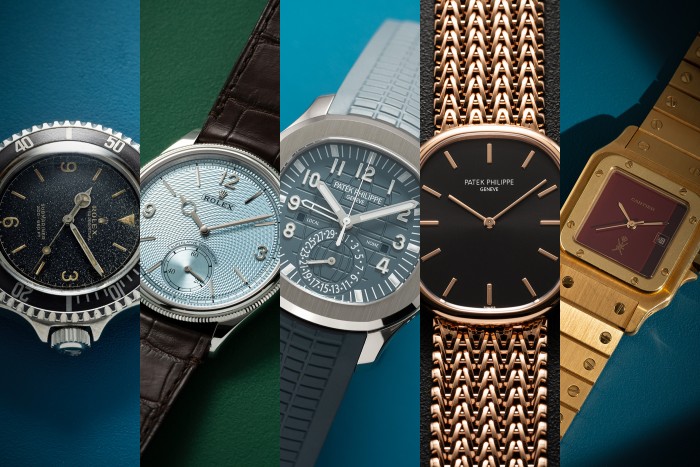Now that the dust has somewhat settled after the Phillips Geneva Watch Auction: Four, we decided to share our thoughts on how the lots we highlighted performed. I think it’s fair to say that even before Aurel took to the rostrum on Saturday evening, we were about to witness history in the making. That said, there were some lots that massively over performed and some that did quite the opposite from the GWA4 auction. Without doubt, most of the focus was on what would happen on Saturday evening in regards to a certain steel Patek Philippe. But how did the other lots we highlighted fair?
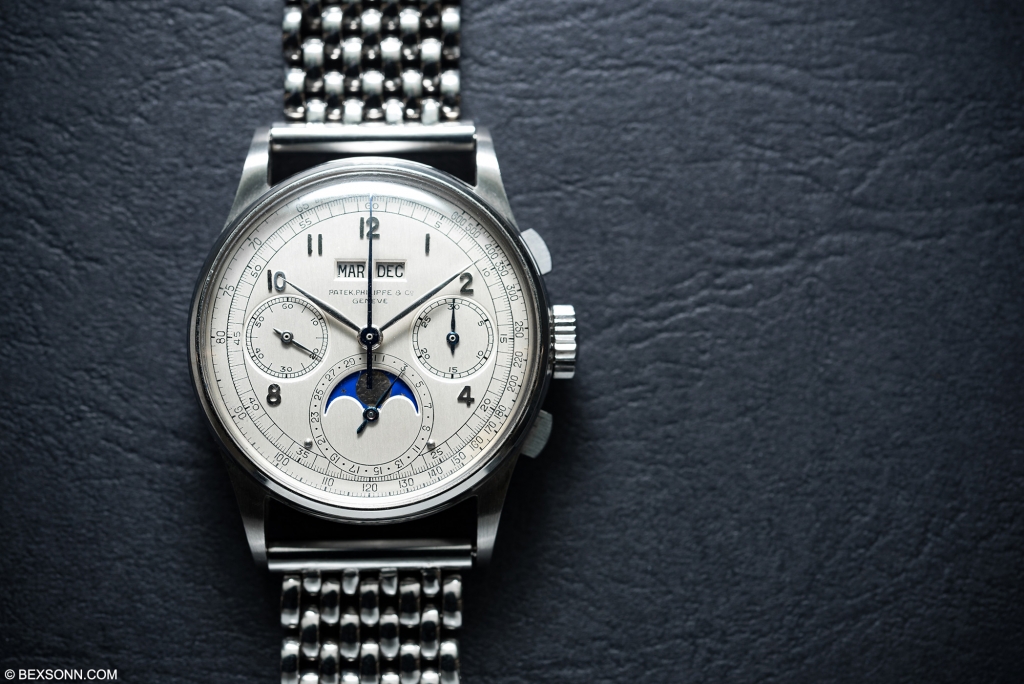 First things firsts, the steel Patek Philippe 1518 perpetual calendar chronograph. Before the auction had even started the speculation on how this lot would perform was of course the hot topic and it’s not hard to see why. This timepiece extremely rare with only four examples ever produced – this particular example being the first of those four, as denoted by the ‘1’ stamped on the inside of its caseback – had the entire watch world on its knees. You could tell from the atmosphere in the room, in the run up to Lot 38, that everybody knew they were about to witness history and there was no disappointment. After a 15-minute battle in the room and over the phone, the hammer eventually came down at 9,600,000 Swiss Francs (11,002,000 CHF after fees). This of course was greeted by applause all-round and would also confirm that on this evening a record was set for the most expensive wristwatch ever sold at auction.
First things firsts, the steel Patek Philippe 1518 perpetual calendar chronograph. Before the auction had even started the speculation on how this lot would perform was of course the hot topic and it’s not hard to see why. This timepiece extremely rare with only four examples ever produced – this particular example being the first of those four, as denoted by the ‘1’ stamped on the inside of its caseback – had the entire watch world on its knees. You could tell from the atmosphere in the room, in the run up to Lot 38, that everybody knew they were about to witness history and there was no disappointment. After a 15-minute battle in the room and over the phone, the hammer eventually came down at 9,600,000 Swiss Francs (11,002,000 CHF after fees). This of course was greeted by applause all-round and would also confirm that on this evening a record was set for the most expensive wristwatch ever sold at auction.
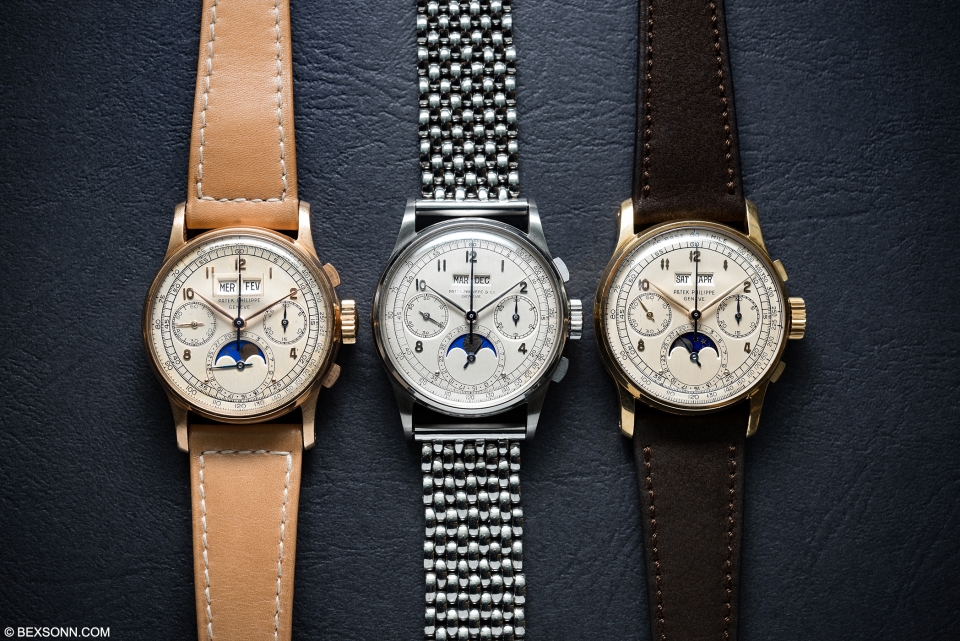 The yellow-gold 1518, which I may add is the more common of the know examples, performed quite admirably selling for 598,000 Swiss Francs, pretty much in line with its higher estimate. The warm pink-gold example that was arguably our favourite 1518 of the lot, of which there are only 44 known examples (making up a small percentage of the total amount produced) performed as expected. The pink-gold 1518 sold for a total of 1,474,000 Swiss Francs.
The yellow-gold 1518, which I may add is the more common of the know examples, performed quite admirably selling for 598,000 Swiss Francs, pretty much in line with its higher estimate. The warm pink-gold example that was arguably our favourite 1518 of the lot, of which there are only 44 known examples (making up a small percentage of the total amount produced) performed as expected. The pink-gold 1518 sold for a total of 1,474,000 Swiss Francs.
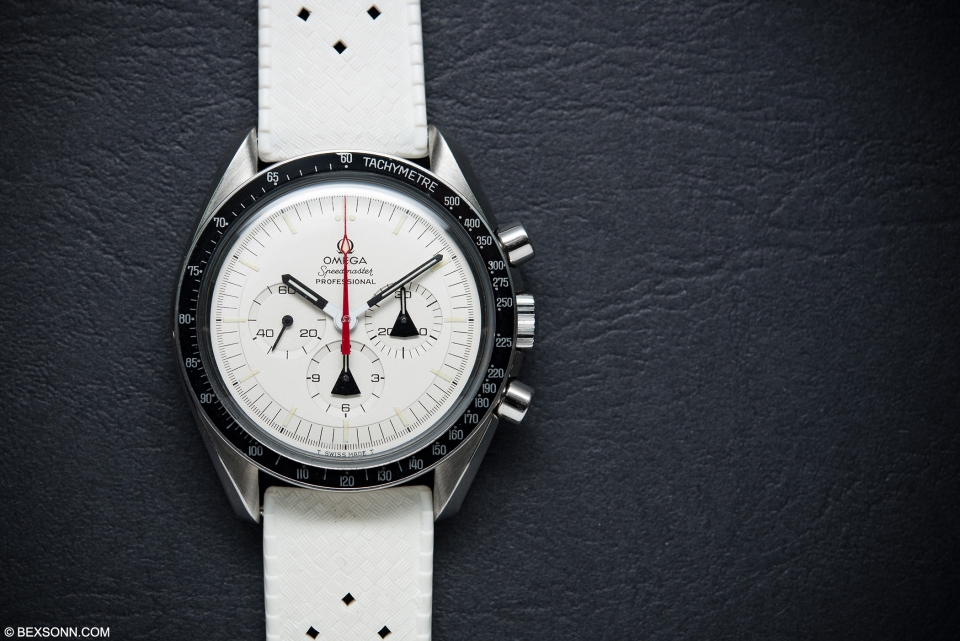 Outside of these Patek Philippe 1518s, the other lots we highlight done rather well. The Alaska Project II, that we had spoken about in some detail here performed rather well. Perhaps not as well as one would’ve thought. While under the hammer it even stuttered but eventually, when the hammer dropped, it sold for a reasonable amount of 125,000 Swiss Francs (156,250 CHF after fees).
Outside of these Patek Philippe 1518s, the other lots we highlight done rather well. The Alaska Project II, that we had spoken about in some detail here performed rather well. Perhaps not as well as one would’ve thought. While under the hammer it even stuttered but eventually, when the hammer dropped, it sold for a reasonable amount of 125,000 Swiss Francs (156,250 CHF after fees).
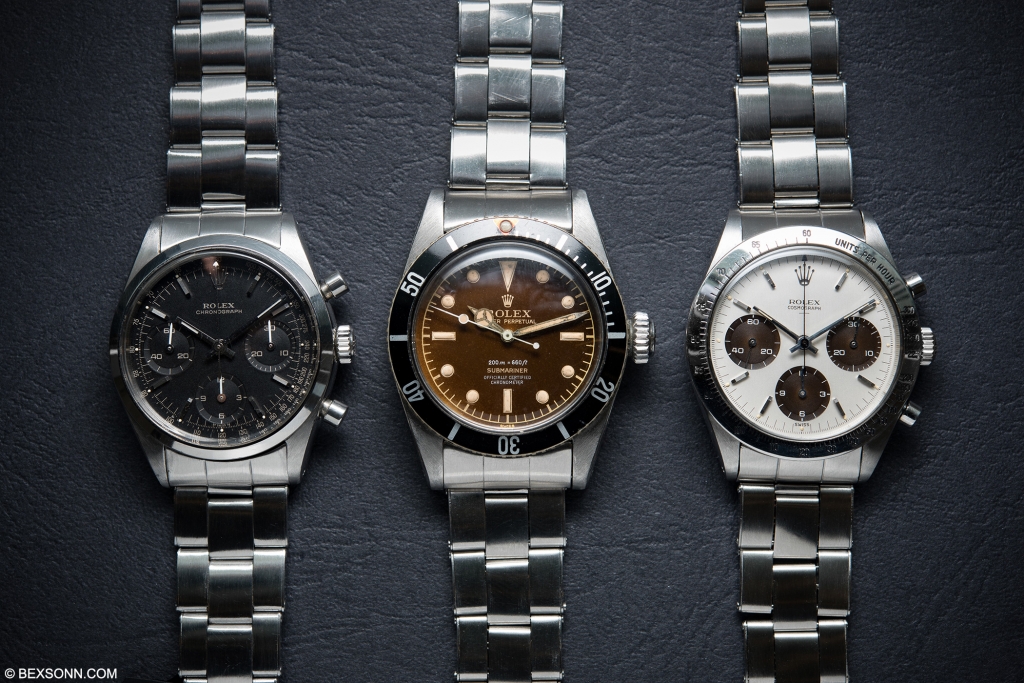 The Rolex timepieces we highlighted also performed rather well on the night too. As mentioned in our full-length write-up, the reference 6239 is the first Daytona ever produced by Rolex. However, in addition, this example featured a rare and sought-after, early bezel calibrated to 300 units. As well as a ‘double Swiss’ dial, something only seen on very early 6239s and what’s more, the dial is also marked with a short line just below the wording ‘Rolex Cosmograph’, known by collectors as an underline. Not to mention its impeccable condition but what impact did this have on its overall result, quite a bit. When the hammer finally fell on this 6239, it sold for 310,000 Swiss Francs, including fees and the room also acknowledged this feat with applause.
The Rolex timepieces we highlighted also performed rather well on the night too. As mentioned in our full-length write-up, the reference 6239 is the first Daytona ever produced by Rolex. However, in addition, this example featured a rare and sought-after, early bezel calibrated to 300 units. As well as a ‘double Swiss’ dial, something only seen on very early 6239s and what’s more, the dial is also marked with a short line just below the wording ‘Rolex Cosmograph’, known by collectors as an underline. Not to mention its impeccable condition but what impact did this have on its overall result, quite a bit. When the hammer finally fell on this 6239, it sold for 310,000 Swiss Francs, including fees and the room also acknowledged this feat with applause.
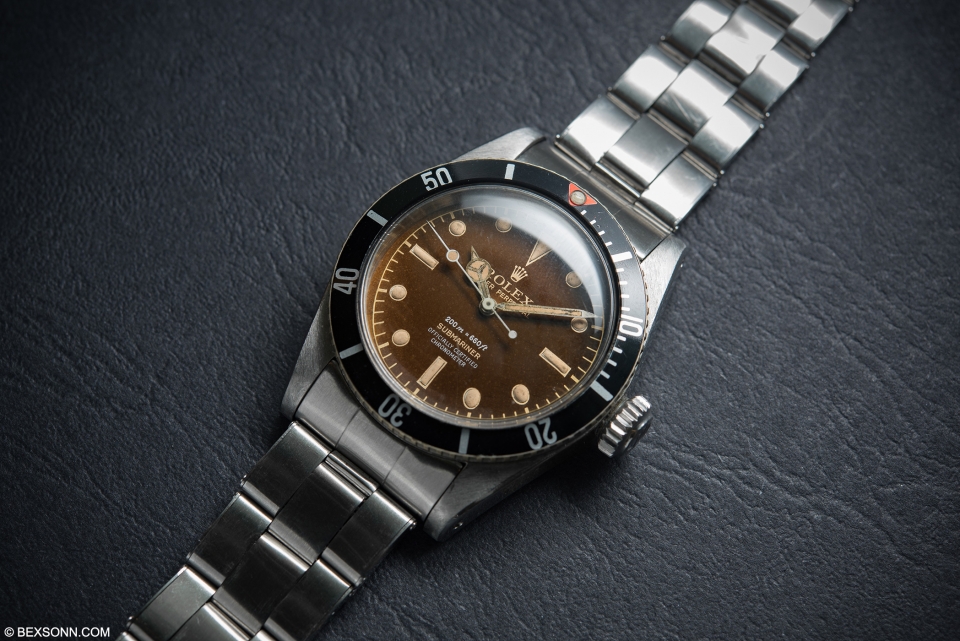 The ref. 6538 from 1959 that incorporated a ‘Big Crown’, period correct bezel and immaculate case, with a dial that’s tropic nature was just downright offensive performed well but perhaps not as exceptionally as one would’ve thought. As mentioned before this 6538 is arguably as cool as they come and while bidding was fierce, when the hammer fell on this lot it sold for 562, 000 Swiss Francs, fees included. While it clearly passed its lower estimate, I think some, myself included, probably expected to see it go for more. The Pre-Daytona, reference 6238 direct predecessor to the venerable Cosmograph Daytona, with rare matte black dial, also performed pretty well on the night too. While it wasn’t earth shattering, when the gavel came down on this lot, all-in, it sold for 150,000 Swiss Francs.
The ref. 6538 from 1959 that incorporated a ‘Big Crown’, period correct bezel and immaculate case, with a dial that’s tropic nature was just downright offensive performed well but perhaps not as exceptionally as one would’ve thought. As mentioned before this 6538 is arguably as cool as they come and while bidding was fierce, when the hammer fell on this lot it sold for 562, 000 Swiss Francs, fees included. While it clearly passed its lower estimate, I think some, myself included, probably expected to see it go for more. The Pre-Daytona, reference 6238 direct predecessor to the venerable Cosmograph Daytona, with rare matte black dial, also performed pretty well on the night too. While it wasn’t earth shattering, when the gavel came down on this lot, all-in, it sold for 150,000 Swiss Francs.
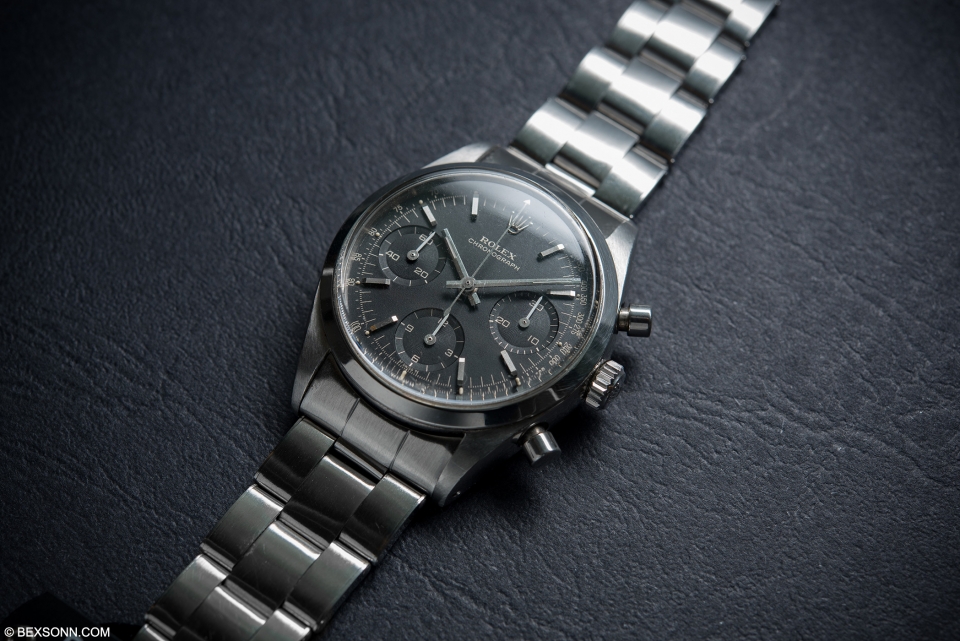 Once again Phillips in association with Bacs & Russo have done well, in fact to the total sum of some 27m Swiss Francs – though you have to remember that just under half of that total largely owed to the steel 1518. However, there were a handful of lots that were passed and a few that were withdrawn. That said, there were a few lots that perhaps underperformed but there were a good few that surpassed expectations. I think this auction was evidence, yet again, that the vintage watch market is very much alive but buyers are becoming more astute and selective in their purchases.
Once again Phillips in association with Bacs & Russo have done well, in fact to the total sum of some 27m Swiss Francs – though you have to remember that just under half of that total largely owed to the steel 1518. However, there were a handful of lots that were passed and a few that were withdrawn. That said, there were a few lots that perhaps underperformed but there were a good few that surpassed expectations. I think this auction was evidence, yet again, that the vintage watch market is very much alive but buyers are becoming more astute and selective in their purchases.
For the entire list of the Phillips Geneva Watches Auction: FOUR results, visit the official Phillips Watches website.
